Gladiolus are grown for their showy spikes of usually open, funnel-shaped flowers borne from spring to early autumn. Each spike can hold up to thirty large flowers.
Gladiolus flowers each have 6 petals (tepals), one above, three below, and two wings. Flowers open from the bottom of the spikes upward. Leaves are narrow and linear and spring from the base. The swordlike leaves appear before the flowers and persist after bloom.
Gladioli grow from corms. The largest corms produce flowers the fastest.
There are more than 10,000 gladioli cultivars. The best known types are listed below. Smaller cultivars tend to be hardier than larger ones.
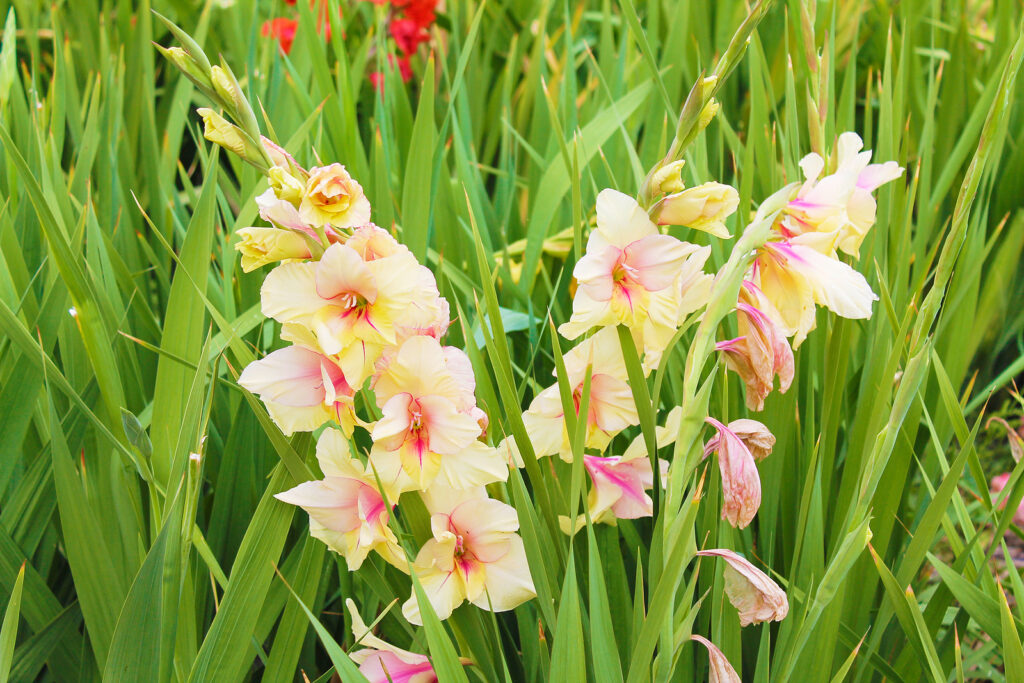
Get to know Gladiolus
- Plant type: Tender summer-blooming bulb
- Growing Zones and range: 2-11; grow as a perennial in Zones 8-11 but best grown as an annual. Will overwinter in Zones 9 to 11 with no protection and as far north as Zone 6 with mulch; lift bulbs after the first frost in colder zones.
- Hardiness: Half-hardy; usually killed by frost, tolerant of heat
- Height and width: 1 to more than 5 feet (.3-1.5m) tall, 8 to 18 inches (20-45cm) wide
- Flowers: Ruffled or smoothy flaring petals to 4 inches (10cm) across; flowers each have 6 petals (tepals), one above, three below, and two wings; colors can be white or shades of pink, yellow, orange, red, violet, green, or white, sometimes bicolored.
- Bloom time: Spring to early autumn; any time of the year in warm-winter regions
- Uses: Vertical accent, cut flowers
- Botanical name: Gladiolus hybrids
- Common name: Gladiolus
Where to plant Gladiolus
- Plant gladiolus in full sun.
- Grow gladiolus in humus-rich, well-drained soil.
- Soil pH of 5.8 to 7 is best.
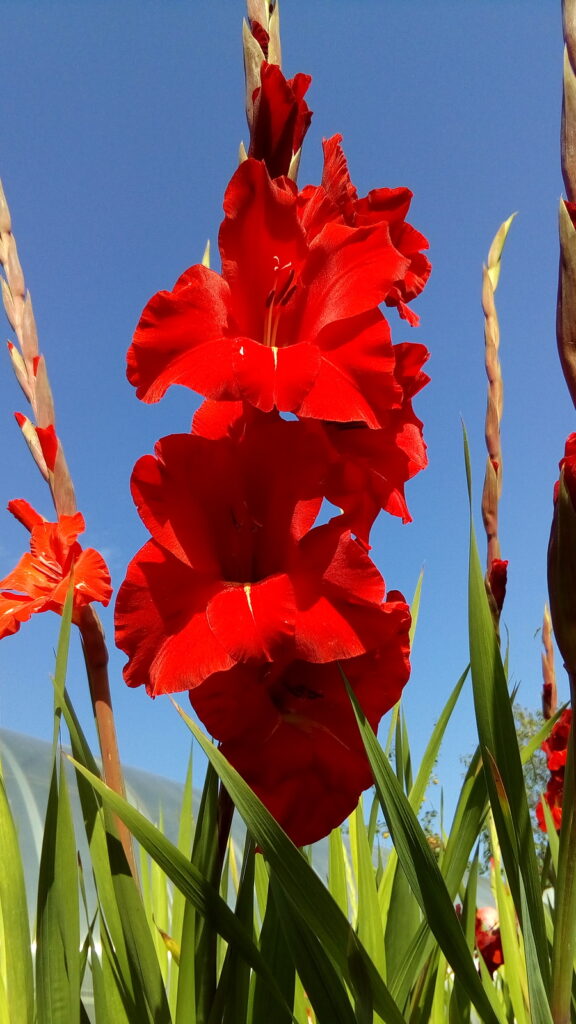
When to plant Gladiolus
- Gladiolus can be grown from corns, division, and rarely seed.
- Plant gladiolus in the garden as soon as the danger of frost has passed. In hot-summer areas (Zones 8-11) plant in late winter.
- Plant corns outdoors in spring after all danger of frost has passed; in Zones 9-11 plant in late winter.
- Corms may be planted earlier indoors and transplanted to the garden when the weather has warmed.
- Sow seeds indoors in spring; sow seeds at 60° to 70°F (15.6°-21°C).
- Sow seed outdoors during warm weather in spring, at least 70°F (21°C).
- Transplant seedlings started indoors to the garden after hardening off for several days; seedlings should be at least 4 inches (10cm) tall.
- Make several successive plantings for months of blooms.
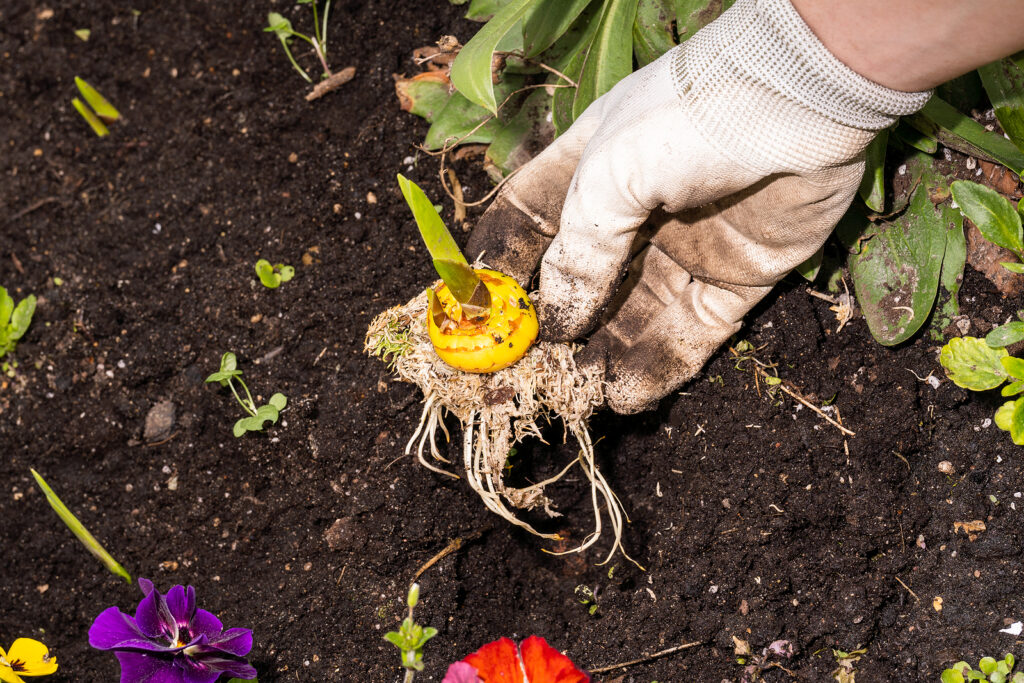
Planting and spacing Gladiolus
- Space gladiolus 8 to 18 inches (20-45CM) apart. Corms started indoors may be spaced 1 to 2 inches (2.5-5cm) apart since they will be transplanted outdoors.
- Plant gladiolus corms 4 to 6 inches (10-15cm) deep and work in compost or slow-release, low-nitrogen fertilizers.
- Plant small corms more shallowly than large ones.
- For a succession of bloom, plant more every 2 or 3 weeks.
How to water and feed Gladiolus
- Gladiolus needs moderate water; keep the soil evenly moist especially during the growing and blooming period. Do not let the soil dry out during the active growing period. Keep dorms in the garden dry during their dormant period.
- Fertilize plants lightly but steadily with an all-purpose fertilizer during the growing season.
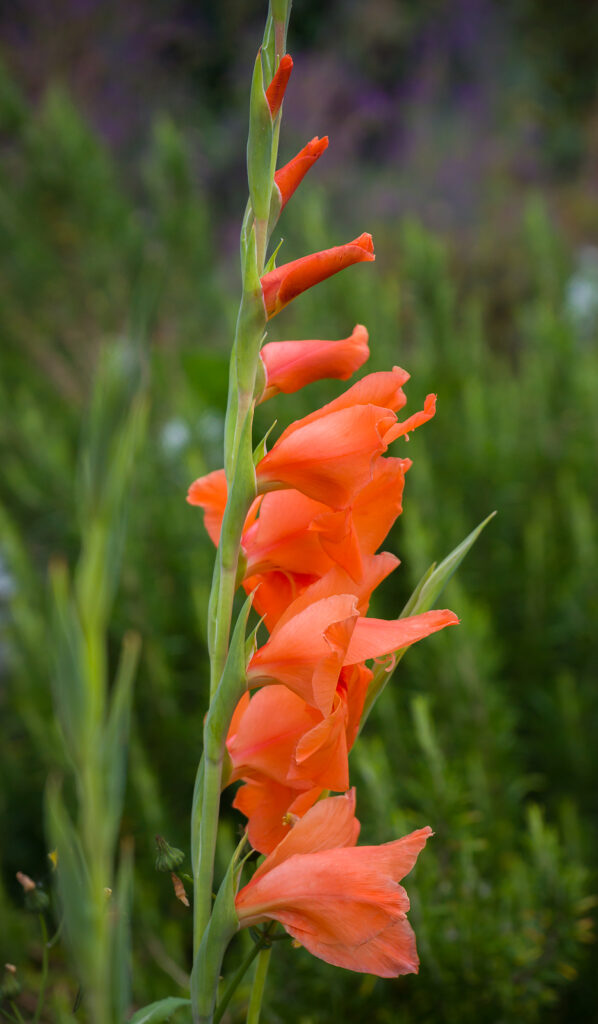
Gladiolus care
- Support gladiolus by staking, especially in windy sites, or mound soil up 6 inches (15cm) around stems.
- Pinch off the top bud while it is small; this will encourage blossoms to open simultaneously.
- Remove faded flower stalks.
- Remove mature foliage when it begins to yellow; before all foliage disappears either lift the corms or mark where they are located.
- When cutting flowers leave at least 2 to 4 leaves so corms will mature next year.
- In late fall, life and store corms to replant next year.
- Protect gladiolus left in the garden in winter with mulch.
- If lifting plants and corms, let the plant dry in the sun for a few days. The mother corm will be withered; two or more small cormels will be attached to the mother. Store and dry the mother corm and cormels; label them before storing in a paper bag in a cool, dry place.
Gladiolus common problems
- Gladiolus are prone to corm rot, gray mold, viruses, aster yellow, spider mites, thrips, and aphids.
Gladiolus propagation
- Gladiolus can be propagated from cormlets or seeds.
- Separate cormlets from the mother plant when the mother is dormant; each mother plant will produce two or three cormlets each year.
- Sow seed of hardy species in spring.
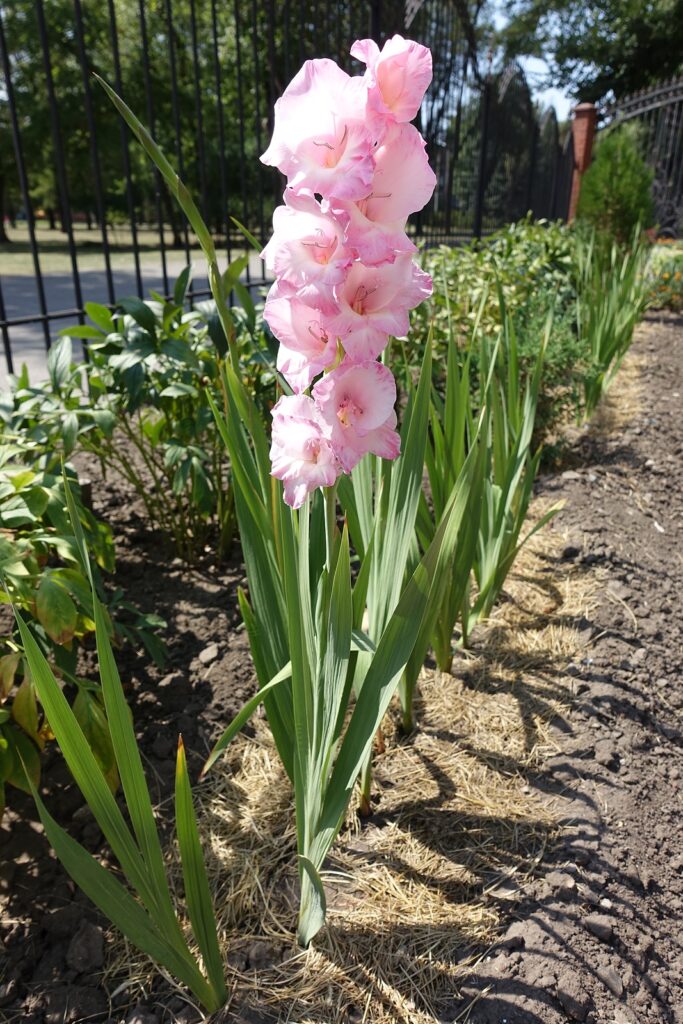
Hybrid garden Gladiolus groupings
There are more than 10,000 gladioli cultivars (hybrids); they have been developed for garden cultivation, cutting, and exhibition. They are classified into three main groups: Grandiflorus, Nanus, and Primulinus.
- Grandiflorus group gladioli flower from late spring to early autumn. Each corm produces one flower spike, 14 to 36 inches (35-90cm) long, with as many as 28 buds, up to 12 open at one time. Grandiflourus gladioli are often divided into five classifications by the diameter of the bottom flower on the spike: the giant is 5½ across to miniature which are 2½ inches apart.
- Nanus group hybrids and cultivars bloom in early summer; they are ideal for cutting. Each corm produces 2 or 3 slender spikes, 9 to 14 inches (22-35cm) long with loosely arranged flowers to 2.5 inches across; each spike bears up to 7 buds, 3 to 5 are open at a time.
- Primulinus group hybrids flower from early to late summer; each corm produces one thin, whip-like stem, 12 to 24 inches (30-60cm) long which bears as many as 23 buds, seven open at a time.
Gladiolus species and varieties
- Baby Gladiolus: hybrid race grows to 18 inches (45cm) tall; flowers are white, pink, red, or lilac; solid or blotched with contrasting colors.
- Butterfly gladiolus. See. G. primulinus below.
- G. bysantinum see G. communis byzantinus below.
- G. callianthus, formerly Acidanthera bicolor: Species produces loose, showy spikes of up to 10 fragrant, funnel-shaped flowers in late summer and fall; blooms are white with a dark purple-red blotch; grows 24 to 40 inches (61-101cm) tall.
- G. carneus, formerly G. blandus: Species grows 8 to 36 inches (20-91cm) tall; bears loose spikes of 3 to 12 funnel-shaped cream, white, or pink flowers marked with red or sometimes yellow.
- G. communis ssp. byzantinus, hardy gladiolus, formerly G. byzantinus: Species grows 24 to 36 inches (61-91cm) tall; bears spikes of 10 to 20 funnel-shaped flowers; blooms are magenta-pink striped with white or pale pink.
- G. hybrids, common garden gladiolus (see groupings above): Gladiolus hybrids produce dense spikes of showy flowers that open from the bottom of spike upward; plants grow 3 to 4 feet (.9-1.2m) tall; flower spikes are 12 to 16 inches (30-40cm) long with as many as 48 buds; hundreds of cultivars in a range of colors including shades of yellow, orange, red, pink, maroon, lavender, violet, green, cream, white, and bi-colors.
- G. italicus, field gladiolus: Species grows 18 to 36 inches tall; bears loose spikes of 5 to 15 flowers; blooms are magenta-pink to purple-pink with pale pink markings; plants prefer hot, dry conditions.
- G. primulinus (G. dalenii): African species grows to 24 inches (61cm) tall with hooded, primrose flowers on wiry stems with as many as 20 flowers.
- G. tristis: Species grow 18 inches to 5 feet tall; bears loose spikes of up to 20 funnel-shaped, fragrant, lilylike flowers creamy white to pale yellow.















